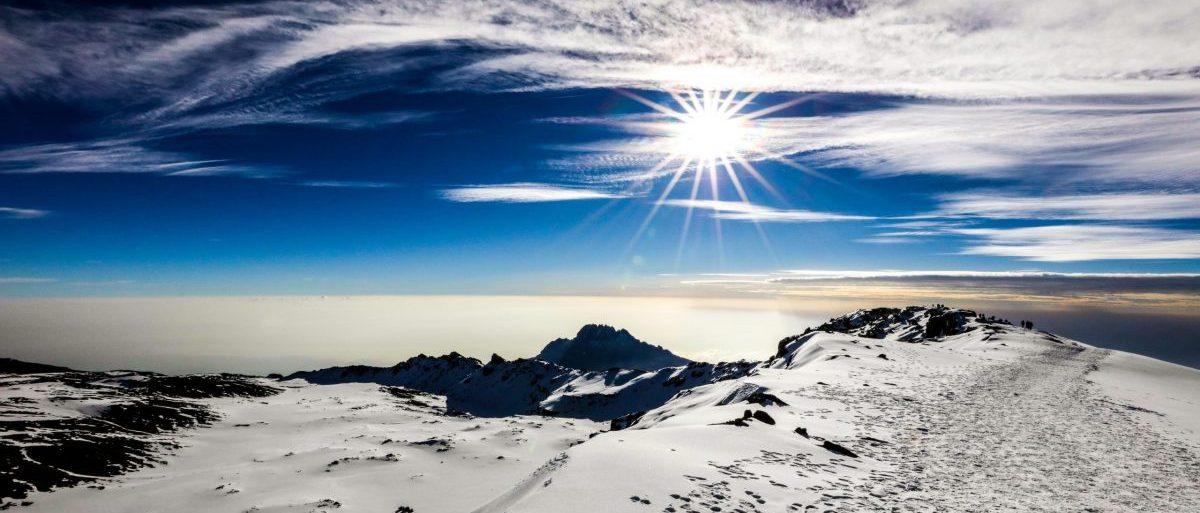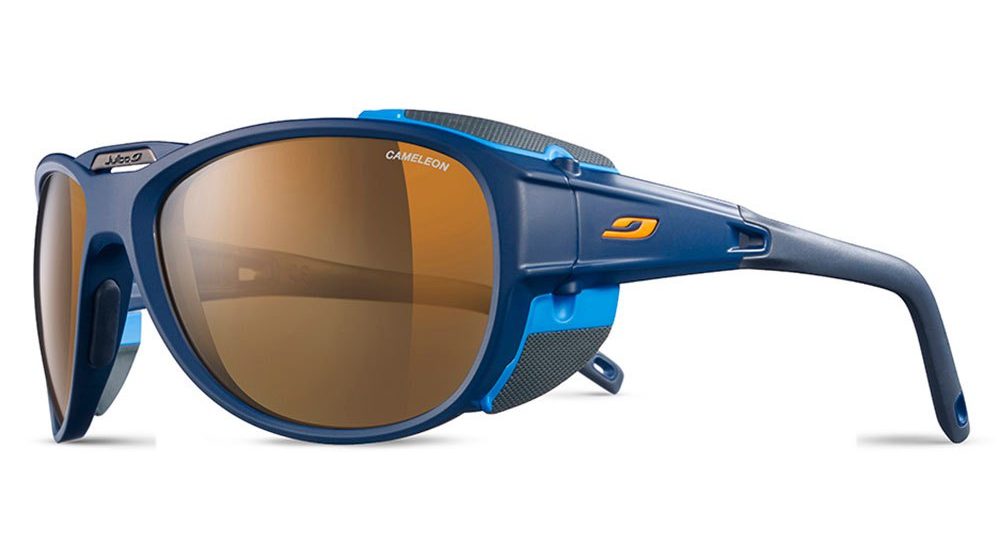
The first forms of eye protection were invented to shield against snow blindness. Ancient peoples in the far north created a variety of googles made of wood or bone to protect their eyes when the sun reflected off the snow. Thankfully, today’s sunglasses are more effective at shielding your eyes than a piece of wood. They are a crucial piece of hiking and climbing equipment. As the name implies, the primary job of sunglasses is to protect your eyes from the sun. This is especially important at higher altitudes where the ultraviolet (UV) radiation from the sun’s rays are stronger than at sea level. In the short term, the sun’s bright light can cause eye strain and fatigue. When sunlight is reflected off snow it produces glare which can cause temporary snow blindness. Over time, UV radiation can permanently damage your eyes resulting in cataracts, macular degeneration, skin cancers, and even blindness (eyecaredoctors.com).
On Kilimanjaro your eyes will be subjected to much higher levels of UV radiation than on your local day hikes. The altitude and exposure on the mountain mean that UV levels are intense and once above the tree line there is very little natural shade. As you will be outside on the mountain most of the day for multiple days in a row you are increasing the duration of sun exposure. That’s why sunglasses are on Peak Planet’s required gear list to climb Kilimanjaro. But the sunglasses that look stylish walking down the street or driving in your car won’t meet your needs on the mountain. So what should you look for when selecting sunglasses for your trek? Let’s consider the different parts of sunglasses: the lenses and the frames.
Lenses are the most important aspect of sunglasses, they’re what block the damaging rays of the sun. Lenses can be made of glass, plastic, polyurethane, or polycarbonate materials. Glass is not a good choice because it’s heavy and can become uncomfortable sitting on the nose. Glass can also break and scratch easily. If your sunglasses have glass lenses, make sure they are shatter-proof and scratch resistant. Plastic is the least expensive but can also scratch easily. Polyurethane is the most durable and lightweight, but it’s also the most expensive. The middle of the road option I recommend is a polycarbonate lenses with a scratch-resistant coating.
The lenses should provide full ultraviolet protection across all spectrums: UVA, UVB, and UVC. Look for the labels that say 100% UV protection. Some sunglass lenses are polarized. While not necessary for everyday hiking, the glare protection in polarized lenses is essential when on snow. This keeps your vision clear, so you can see where you’re going and appreciate the spectacular views. Lenses also come in a variety of tints, but they don’t provide any additional protection.
Frames can be made of metal, plastic, nylon, or a plastic/nylon blend. Metal frames are not a good choice on the mountain as they can get hot when exposed to the sun and could then burn your skin. A nylon/plastic blend will be lightweight enough to be comfortable and flexible enough to not break when you drop them. The most important features to look for in frames are fit and coverage. Sunglasses should fit well enough that they don’t slide off your face when you sweat. The frames should also hold the lenses close enough to your face that very little light can get to the eyes from the top, bottom, or sides. Many mountaineering-specific sunglasses have either broad temple arms or removable leather or plastic blinders at the temples. These block out as much sun as possible and shield the eyes from wind during while on the mountain.

For climbing Kilimanjaro, the following recommendations all feature lenses that offer 100% UV protection, are made of scratch-resistant polycarbonate materials, and are polarized:
The Julbo Explorer REACTIV are top-of-the-line mountaineering sunglasses. If you spend a lot of time on snowy mountains, then the extra features of these sunglasses may be worth the price tag. They have shatterproof lenses and come with a lifetime warranty. They are also customizable with adjustable temple arms and removable side shields.
The Spy MC3 polarized sunglasses, and the Native Eyewear Endura XP, don’t have side shields. If you consider yourself primarily a hiker and not a mountaineer, something like these sunglasses will work for your Kilimanjaro trek. They both have very wide temple arms that will sufficiently protect your eyes from the sun coming in on the sides. They are also significantly less expensive than the Julbo Explorer REACTIV. In addition, the Native Eyewear Endura XP comes with a lifetime warranty.


Because fit is a critical part of how sunglasses provide protection, it’s important to try them on in-person or purchase them from an on-line company with a good return policy. As with all pieces of gear, your individual needs and budget will determine what sunglasses you bring to climb Kilimanjaro. In the end, make sure they are durable enough to not break or scratch during your trip, provide the right type of protection for your eyes, and fit comfortably. Then you’ll be good to go on long trekking days through wind, or snow, or sun, and your eyes will thank you.


